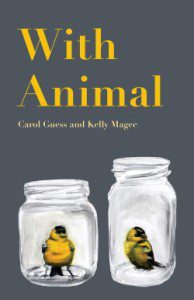
I’m of the stage in life when I get a lot of questions about babies. And because, apparently, my reproductive facilities are winding down with all the drama of the doomsday clock, this entitles near-strangers to details about my immediate reproductive future.
A man at my parents’ church displays pictures of his new grandson. “When are you going to get yourselves one of these?” he says, looking significantly at my parents, then me. Coworkers ask me about an upcoming vacation with my husband. “Are you going to get pregnant there? You could have a vacation baby!”
I don’t know, friend. What’s your sperm count these days? When was your last cycle? Here’s a laminated copy of my menstrual calendar for you, ovulation days marked green.
As little as I want to discuss pregnancy with well-meaning acquaintances, I do often imagine what pregnancy will be like. The trouble comes when I consider the transition from a baby inside of me to a baby outside of me. How do you know what it wants? What do you even do with a baby all day? What if we mess up? What if something happens that we can’t control?
These same anxieties permeate With Animal, a new story collection by Carol Guess and Kelly Magee. This collection vibrates with the anticipation and fear of the parenting unknown, starting in the womb.
These are stories of humans who are pregnant with animals. For most of the pieces, this involves a woman developing a literal animal (or multiple animals) in her uterus, from fish and foxes to unicorns and killer bees. With this central conceit established, the stories can begin to play. They can also begin to terrorize.
One delight of this collection is how it plays with genre. Many of these stories explore the shifting Venn diagram of fantasy, science fiction, and surrealism; the collection is heavy with the scents of both stainless steel and dragon smoke. The characters live in bureaucratic near-futures and familiar near-pasts, and Guess and Magee exhibit a broad vocal range, handling action scenes and fables with equal aplomb, as in this parable module from “With Snakes”:
Once a man fell in love with a pair of snakeskin boots. In the dark of his closet he loved them in secret. The boots belonged to a God-talking man whose sermons slithered, whose arms were scarred.
With Animal is peppered with a squirm-in-your-seat kind of humor, bringing to mind the flawed characters and outlandish situations of Flannery O’Connor, George Saunders, and Etgar Keret as these new parents confront their changed reality.

One delicious discomfort of this collection is how the stories embody the fears and anxieties of parenthood. What if you don’t understand your child? What if you are inadequate? What if your child rejects you? A rebellious teenager may seem like a different species entirely – what if your teenager is, quite literally, an adolescent spider getting mixed up with the wrong crowd at school?
The animals bear meaning in this book, and the stories actively confront pain. The births of these different children read by turns as metaphors for illness, disability, infertility, miscarriage, post-partum depression, or flat-out unrealistic expectations. The reader is invited to make these connections, as the stories rely heavily on the suggestion and inference that make flash fiction so powerful. It is easy to see yourself, your child, your possible child, in the humans and animals of these pages. It is necessary to consider how you will love each other, to learn the language that love will speak, as in “With Human”:
Good boy, she said. She took him into her arms: her child, her son. From deep in her throat came a guttural sound.
She licked back the hair from his forehead. Nipped at his face. Nosed him back into the car.
The collection’s most powerful questions center squarely on the family. With Animal‘s families embrace many iterations of the name, from committed partnerships to marriages to single parents. Every family is dramatically altered by the arrival of the animal child, and every family has an equal chance for beauty, pain, triumph, and disaster.
Families expand and contract around these animal offspring, and many of the narrators struggle with loneliness and exclusion in their new family arrangement. In “With Me,” the child narrator is rejected by her mother as a disappointment. In “With Fish,” the narrator is driven away by her pregnant partner. In “With Squirrel,” the mother is rejected by her child in favor of a non-biological parent. The arrival of babies does not automatically heal family wounds or seal family bonds. The characters must struggle for connection, as in “With Sparrow” when “My sparrow’s wings brush my belly, a message meant for sky, not me.” Even this most intimate of touches does not guarantee understanding. When characters successfully connect, the effect is surprisingly lovely and affectingly bittersweet.
With Animal is a collection of vivid wit, imagination, and pathos. Like all new parents, so I’m frequently told, these characters have no idea what they’re in for. Luckily, readers know exactly what to expect: a delightful menagerie of weird, wonderful stories, a tender exploration of the pleasure and anticipation, the helplessness and fear, of adding children to a family.
This collection illuminates why I feel so uncomfortable with invasive questions about baby plans. Those questions assume that my husband and I are willing and able to have children. Those questions ignore the possibility of fear or reluctance. They bypass the messy business of not just making a baby, but creating a family. The next time someone asks, maybe I’ll tell them I’m with snail. Let them consider all that it could mean.




